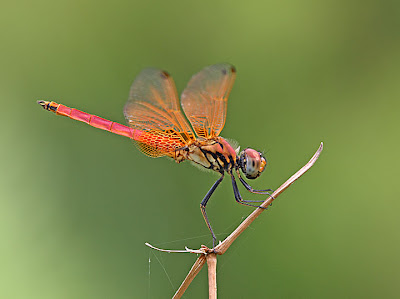Common name : Yellow Featherlegs
Status : Common
Location : Chestnut Ave, Segar Road, Venus Drive, Jurong Woods II
This is classified as a common species but not many of us have seen or phogographed it in Singapore. The male has beautiful yellowish thorax, a black obdomen with white marking on it.
(Male - Chestnut Avel, 4 Aug 2009)
The male was first spotted at a stream near Venus Drive but I did not manage to get any shot as it was difficult to approach. Two males were seen perching in a drain near Segar Road few week later. I managed to get some record shots but was still unable to get closer to it. I finally captured a better shot when I found the male again at a stream along Chestnut Avenue Bicycle Trail. This time, the female which has an overall black thorax and obdomen was also found nearby.
(Female - Chestnut Avenue, 4 Aug 2009)
When I revisited the place again 2 day later, a juvenile was found. It has a unique overall white in colour.
(Juvenile - Chestnut Ave, 6 Aug 2009)
(Mating - Chestnut Ave, 26 Aug 2009)
My recent sighting of this species where the juvenile, male, female as well as 2 mating pairs were spotted at a small muddy stream at Jurong Woods II on 21 Aug 2010.



















































